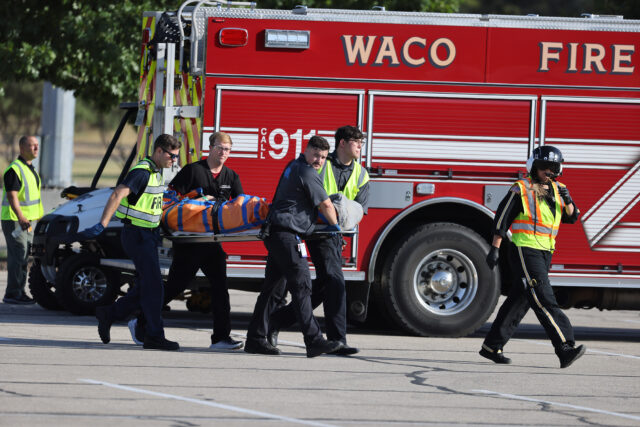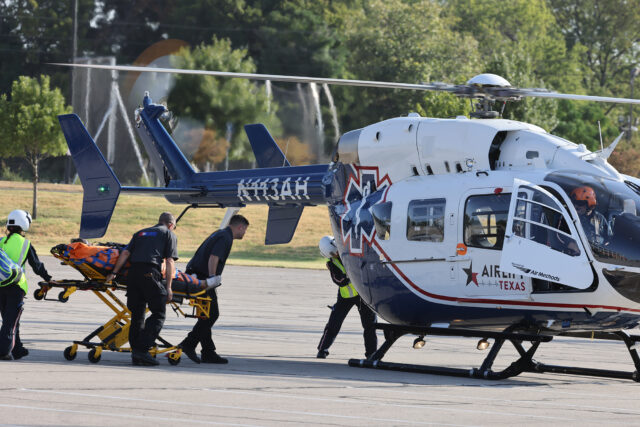By Madeline Condor | Staff Writer
The Baylor University Department of Public Safety conducted a training exercise Tuesday to evaluate its responses in a time of crisis.
The exercise included Baylor DPS and its branches as well as local law enforcement, including fire safety and emergency medical services. Police chiefs, directors and emergency management from other universities within the Big 12 were invited to watch the events.
Mark Childers, associate vice president for safety and security, said there are three reasons these trainings are conducted: to earn the respect of the community; to bring together local county police, federal law enforcement, fire safety services and hospitals; and to identify weaknesses.
“We have certain processes and procedures in place for an active shooter response, but at the end of the day, unless you’re in a safe, controlled environment, we can’t identify those weaknesses,” Childers said. “So, we’re here to improve on those things.”

The exercise began at 6:30 a.m. and ended around 1 p.m., unfolding in and around Baylor Law School, McLane Stadium and campus. The training was visible to citizens, but the general public could not enter due to a safety perimeter surrounding the area.
Dallas senior Monroe Glass said she feels safer entering classes following the training, especially because she lives close to campus.
“It’s better to get these things done sooner rather than later for the new school year, and I like knowing Baylor is doing things like this to protect students,” Glass said.
This is the second active shooter training for Baylor DPS. The first took place last year following the Uvalde school shooting. Conducting these trainings takes an “eight-month process of planning and preparation,” Childers said.
One of the scenarios at the training involved a high-level shooter situation that escalated to involve hostages. The personnel used internal staff to act as the aggressor.
“You’ve got to have that real-life added,” Childers said. “You may or may not have heard the screaming and yelling inside, but all of that external stress that was put on officers and EMS as they arrive is a part of it.”
In order to improve their processes, Childers said it is important to use live people rather than dummies for training.

Following the exercise, the personnel come together to evaluate what was done right and what was done wrong. After the discussion, they plan on how to improve the process. Childers said he promised that next year, things would be evaluated and improved, as “that’s the whole goal.”
“We’re really proud of ourselves for earning respect, constantly being the tip of the spear and pushing ourselves to be better, faster and stronger every day,” Childers said.





